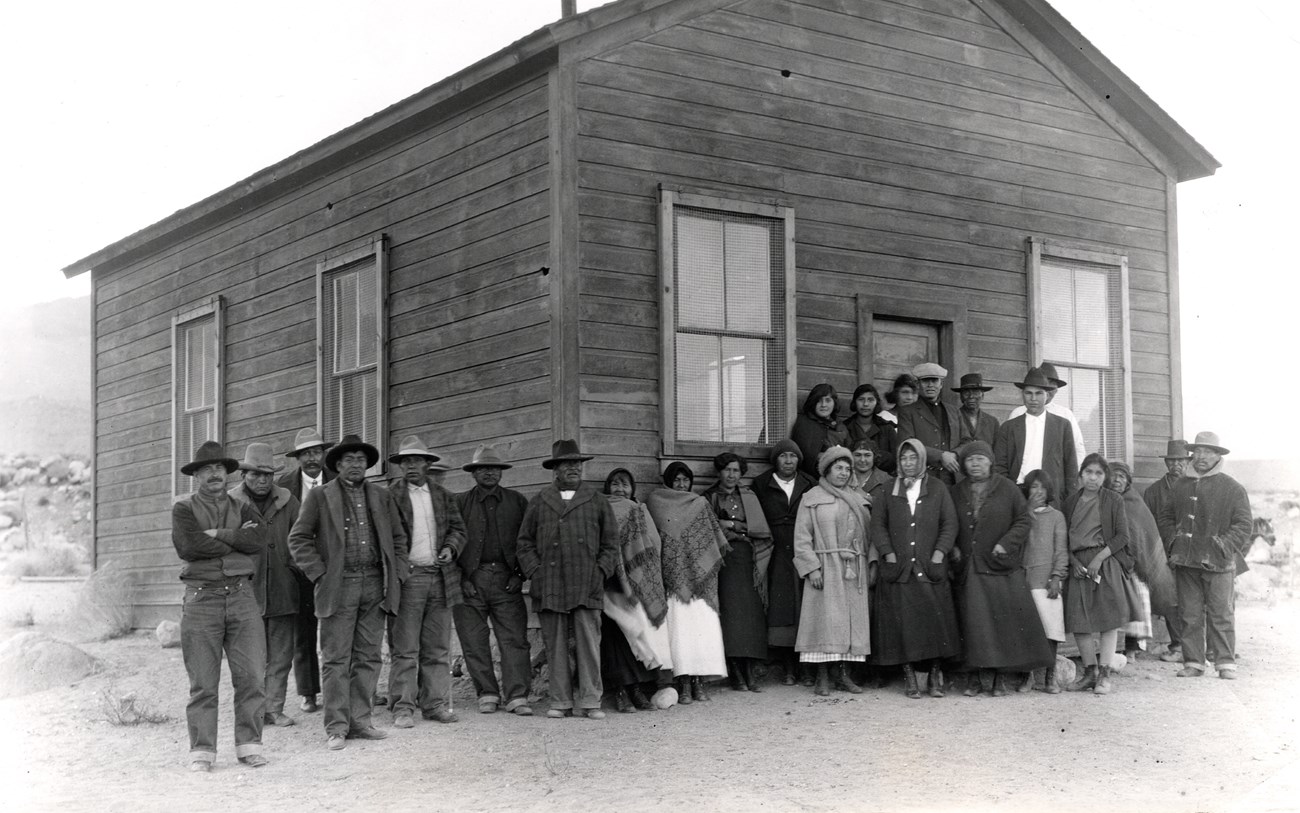Part of a series of articles titled Women's History in the Pacific West - California-Great Basin Collection.
Previous: Caro Luevanos-Garcia
Next: Piu-uina
Article

Photo courtesy of the Laws Railroad Museum & Historical Site in Bishop, California.
Manzanar is most frequently associated with the three-and-a-half-year period in its history when over 10,000 Japanese Americans were incarcerated there; however, its story stretches back thousands of years as part of the homelands of the Owens Valley Paiute and other Native peoples. Just thirty-four miles from the current Manzanar National Historic Site, Alice Piper, a 15-year-old Paiute student, made history in 1924 by successfully suing the Big Pine School District to integrate their classrooms and allow Indigenous students to attend their newly built school. The California Supreme Court Case Piper v. Big Pine School District of Inyo County not only changed the treatment of Indigenous students in California schools, but also set a precedent that was cited thirty years later in the US Supreme Court case Brown v. Board of Education of Topeka, which declared racial segregation in public schools unconstitutional.1
Alice Piper was born on June 7, 1908 in Big Pine, California.2 Her father, Pike, was a laborer and her mother, Annie, was a laundress.3 Piper attended the nearby Indian day school run by the Bureau of Indian Affairs. This school opened in 1891 during the height of the assimilationist model of Native American education, as the federal government operated schools to sever Native children’s ties with their Indigenous cultures and homelands and replace them with an Anglo-American curriculum that emphasized careers in manual labor for Native graduates.4 Many of these Indian schools, including the one in Big Pine, were habitually underfunded, offered fewer grade levels, and were generally of poorer quality than the corresponding local public schools. Funding shortfalls and low enrollments had led to the closure some of these Indian schools in the 1910s, with the Native pupils then attending public schools, often to the displeasure of white parents.5 Late nineteenth-century California court cases had affirmed the right of local school districts to follow a “separate but equal” doctrine and most white parents expected segregated schools.6 Thus in August 1923, when Piper and six other Native children attempted to attend the Big Pine grammar school, the school board’s refusal had community support.7
As with many test cases, the lawyer for the Native students was likely strategic in designating Piper the lead plaintiff. A community witness to the case described Piper as “beautiful” and “intelligent,” indicating that she came across in court as an ideal plaintiff.8 Piper’s successful lawsuit, filed in December of 1923 and decided unanimously by the California Supreme Court on June 2, 1924, represented a significant step in school integration in California. The court sided with Piper on the basis that her parents were tax-paying citizens of the United States who had not lived on a reservation.9 At this time, California Indians, like Piper, were not recognized as belonging to a specific tribe by the US government and were thus considered citizens of the United States. In addition, the court cited the unequal quality of the Indian school compared to the public school as reason to support the admission of Piper and the six other Native students.10
Piper never discussed the pivotal court case as an adult.11 According to the 1937 Indian Census Roll, at 28 years old, Piper was single and listed in her father’s household in Inyo County, California.12 She later appeared in the 1961 yearbook for the Stewart Indian School in Carson City, Nevada, working as an instructional aide for boys.13 Piper died in Los Angeles on August 22, 1985 at the age of 77.14 Ninety years after her triumphant court case, in June 2014, a statue outside the Big Pine School memorialized Alice Piper’s contributions to improving educational equality for Native students in California.15
Part of a series of articles titled Women's History in the Pacific West - California-Great Basin Collection.
Previous: Caro Luevanos-Garcia
Next: Piu-uina
Last updated: February 22, 2022